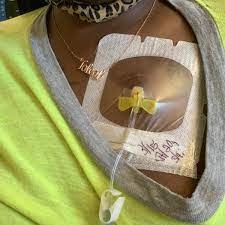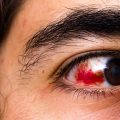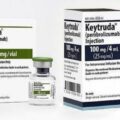Experiencing trouble sleeping is common in both adults and children. There are many contributing factors as to why it’s difficult to get the sleep we want and need. Perhaps our sleep environment is not conducive, something is weighing on us mentally, or our children are awake at night. Sleep apnea or insomnia could also be playing a role. In addition to other protective factors, like proper nutrition and regular exercise, sleep is extremely important for our overall health. When something else is going on with our body that affects our health, such as a cancer diagnosis, it’s doubly as important in those cases.
About one third to one half of cancer patients report sleep disturbances. Many report having insomnia and feeling as though it is difficult to sleep at all. The percentage of cancer patients who report feeling this way is almost double the general population. For cancer patients, there are unfortunately a slew of reasons at play that are contributing and making sleep very hard to come by. At various points in time, getting the rest your body needs may prove difficult. Understanding the reasons sleep may be nonexistent is the first step in moving towards a solution. Next, implementing strategies to support restful sleep will increase your body’s energy and its ability to heal.

What is a chemo port?
A chemo port is a small, implantable reservoir with a thin silicone tube that attaches to a vein. The main advantage of this vein-access device is that chemotherapy medications can be delivered directly into the port rather than a vein, eliminating the need for needle sticks.
Many people who receive chemotherapy choose to have a port implanted if recommended by their treatment team. If you’re interested in a chemo port, consider this information provided by the infusion center team at Moffitt Cancer Center.
Where is a chemo port implanted?
Usually, a chemo port is centrally placed under the skin near a large vein in the upper chest. This can be a good alternative to an intravenous (IV) catheter that is peripherally placed in an arm or hand vein (a suitable IV site can sometimes be difficult to find). Easily accessible by a patient’s treatment team, a port can provide a safer and more efficient medication delivery process than an IV. And, while a port will produce a visible, quarter-sized “bump” under the skin, it can be easily covered with regular clothing.
How long can a chemo port remain in place?
Unlike an IV catheter, which must be reinserted for each treatment session, a port can remain in place as long as necessary – for several weeks, months or even years. When it is no longer needed, the port can be removed through a relatively simple outpatient procedure.
What can go wrong with a chemo port?
Each chemo port type can have side effects and risks. These include potential infections, blockages, and clots. Less common problems are a twist in the port under your skin or the port moving. All these contribute to sleep problems especially sleep interruption.
How to Sleep With A Chemo Port
The best way to sleep with a chemo port is on your back, this position reduces the risk of friction against the port and with minimal pressure on the area you are more likely to sleep well and deep.
This can be quite beneficial as a new study shows that how well you sleep may determine how well your body fights cancer — and may help explain how mental well-being plays into cancer recovery and progression. After analyzing previous studies, Stanford University psychiatrist David Spiegel, MD, and colleague Sandra Sephton, MD, say that sleep problems alter the balance of at least two hormones that influence cancer cells.
Tips for better sleep for cancer patients
Below are some tips to help you fall asleep easier and hopefully stay asleep:
Before bed
- A warm bath or shower before sleep can help relax tense muscles and bring on sleep easier. Another way to ease muscle tension is to do gentle stretches each day.
- Go to bed when you are tired and turn out the lights. If you do not fall asleep in 15 minutes, get up and do something else. Listen to relaxing music, read a book. Go back to bed when you feel sleepy.
- Keep the clock face turned away so you cannot see it if you wake up in the middle of your sleep time.
- Try using a progressive relaxation CD that is specifically for helping people fall asleep.
- Try a cup of Chamomile tea. This is a common herbal tea that is safe and helps people relax and sleep.
- Keep paper and pen on your bedside table to write down any thoughts that pop up while falling asleep.
Sleep environment
- Use nightlights in hallways so you do not have to turn on lights in the middle of the night should you need to get up.
- Keep your bedroom slightly cool. It helps the body temperature drop as it does naturally during sleep.
- Keep the sleeping area quiet. Silence helps you sleep. Use background noise that is constant or soothing, such as a fan, to mask noise that you can not control such as busy streets, trains, airplanes.
- Use your bedroom only for sleep. Try not to watch TV or read in bed. It may help to move any electronic equipment that gives off light or makes sound out of the bedroom.
Maintain a routine
- Go to bed and get up at the same time every day. Don’t sleep late on weekends.
- Create a pre-bedtime routine that you follow each day.
Food and your sleep habits
- Try to eat your evening meal at least two hours before bedtime. Restrict liquids and use the bathroom before bedtime to avoid waking up for trips to the bathroom. Take any needed medicines for incontinence before bedtime.
- Avoid fatty and spicy foods at the evening meal. They can cause heartburn which can keep you awake, or wake you up too soon.
- Do not drink anything with caffeine after lunch. Caffeine is a stimulant which can keep you awake. Nicotine is a powerful stimulant also and can keep you awake.
- Do not drink alcohol near bedtime. It may make you sleepy but it will wake you up too soon or cause you to wake up often during the night.
- Foods containing tryptophan help the body make serotonin, which makes the body sleepy. Turkey, bread, cereal and milk all contain tryptophan. A glass of milk or a turkey sandwich may help promote sleep.
Other helpful hints
- Physical activity can help promote healthy sleep. The best time, for many people, to exercise is 4-6 hours before bedtime.
- Only sleep in your bed at night time. Take any naps in other locations.
- Set aside a period of time each day to think over or journal about issues that worry you. After the time is up, try to put those thoughts away and move on to other tasks.
- Join a support group or seek individual counseling to address anxiety, depression or stress that can affect sleep.
The amount of sleep a person needs varies from person to person. During cancer treatment, the need for sleep may increase some, as the body repairs itself. Most people need from 7-9 hours of sleep. The need for sleep does not decrease as we age, as popular myths proclaim.
When should I call my health care team?
Contact your health care team right away if:
- The area around the catheter or port becomes red, swollen, painful, bruised, or warm.
- Your arm on the same side as the catheter becomes swollen.
- There is a lot of bleeding around the catheter or port.
- You get a fever.
- Any fluids leak out of the catheter.
- You have shortness of breath or dizziness.
- The catheter tube outside your body gets longer.
- You cannot flush the catheter or port with liquid and it seems blocked. Never force fluid into the catheter.
- You experience any symptoms or problems your cancer care team advised you that you should let them know about right away.
It is important for you to talk with your doctor about your sleep concerns. It is especially important to talk to them if your lack of sleep interferes with your daytime activities and ability to function.





